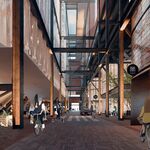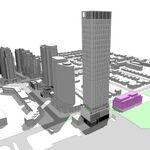Northern Light
Superstar
We can all agree that there’s a few different types to the 401. There’s the Toronto proper 401, the West GTA 401, the East GTA 401, and the rest of the provincial highway 401. I don’t understand why the politicians don’t realize that not everyones destination is Toronto and some people need to use the highways as a thruway. Making this GTA west highway helps a lot. Even if it is a bit more up north, you could have it go from KW/Guelph or even the 401/407 interchange, to Highway 7/115 in Peterborough and you’ll see how much of a relief It takes off of the 401/QEW & Gardner/403. We have a combined population of every single type of driver all with different destinations, and driving different types of vehicles whether it takes up minimal space or roughly 2 meters like a truck, all live on the 401 even as we speak. All this talk shouldn’t happen just for one decision to be made and if im being honest, another new highway or two is a MUST for the GTA whether we like it or not. Transit is not an option for a driver who wants to go from let’s say cobourg to Detroit or from Barrie to Kingston for example, we have to consider these people as well. There’s a reason why a place like New York or LA has so many different highways and it’s all for different intentions and purposes. You could leave anytime during the day and take so many different options to avoid rush hour traffic. Toronto needs to have something like this
Toronto not only doesn't need something like this, NYC for sure and maybe L.A. will be removing some of this, as they should.
You're not recognizing a few things.
1) No highway of the type being described is affordable or sustainable without sprawl.
You cannot build a six-lane (or more) highway without drawing in the development to support it.
The new highway does not relieve traffic.
If you drove on those highways in L.A. you'd recognize the problem.
Each time the capacity was enhanced, or a new/extended highway built, more cars arrived to use it, resulting in no net savings in travel time.
That's how it always works.
2)Very few people should be driving 1/2 way across the province routinely. There's no sense to that. You should not living Belleville and work in Brampton. That's illogical and environmentally atrocious.
There needs to be a penalty that makes frivolous over-use of highways expensive enough that no one would dream of doing that.
3) If someone has a once, twice or three times per year trip they have to make from Belleville to Brampton; An extra $6 in tolls each way is not material to their cost. But if it reduces traffic by forcing regulars onto trains, it means you can make the long trip faster and w/less hassle than would otherwise be the case.
More highways equals more sprawl.
More sprawl equals higher taxes, and a more damaged environment.
The priorities of more people, including a healthy environment out rank the convenience of the few or the one.





